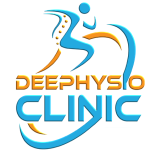Cervical Traction: Involves applying traction to the cervical (neck) region of the spine. It is often used for conditions like cervical disc herniations, radiculopathy, and neck pain.
Lumbar Traction: Focuses on the lumbar (lower back) region of the spine. It is used for lower back pain, sciatica, and lumbar disc herniations.
Manual Traction: This is performed manually by a physiotherapist who uses their hands to provide controlled traction to the spine or joint.
Mechanical Traction: Mechanical devices or traction tables are used to apply the force. These devices are adjustable and allow precise control of the traction parameters.
Mechanism of Action: Traction creates a stretching force that can help:
Reduce pressure on compressed or pinched nerves, relieving symptoms like pain, tingling, and numbness.
Separate vertebral bodies or joint surfaces to reduce joint compression.
Increase the space between vertebrae, which can assist in reducing disc herniations or bulges.
Patient Positioning: Traction can be applied with the patient in a supine (lying on their back) or seated position, depending on the specific condition being treated and the type of traction being used.
Traction Parameters: A physiotherapist will determine the appropriate amount of traction force, the duration of each session, and the number of sessions based on the patient’s condition and response to treatment.
Patient Comfort and Safety: Ensuring the patient’s comfort during traction is important. Proper padding and head positioning are typically used to prevent discomfort or pressure points. Safety measures are in place to stop the traction if the patient experiences any adverse effects.
Indications: Traction is used for conditions like herniated discs, degenerative disc disease, spinal stenosis, sciatica, facet joint syndrome, and other musculoskeletal or neurological issues that involve spinal compression.
Contraindications: Traction is not suitable for all patients. Contraindications may include acute injuries, certain medical conditions, and pregnancy. A thorough assessment by a physiotherapist is necessary to determine whether traction is appropriate for a specific patient.
Adjunctive Therapies: Traction is often combined with other physiotherapy modalities and exercises to provide comprehensive care. This may include strengthening exercises, manual therapy, and pain management strategies.
Traction is a valuable tool in physiotherapy, but it should be administered by a trained and qualified physiotherapist who can assess the patient’s condition and create a safe and effective treatment plan. The choice of traction technique and parameters will vary based on the individual’s diagnosis and treatment goals.
